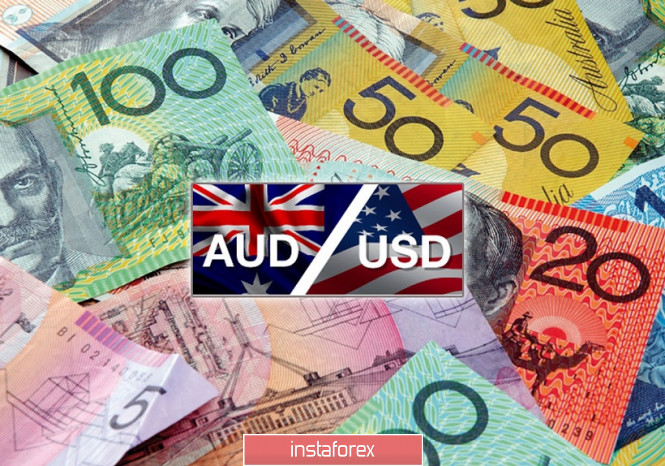The Australian dollar, coupled with the US currency, woke up from a lethargic dream today and tested the 68th figure, showing an upward impulse. However, this is far from the AUD/USD bulls' first attempt to enter the area of this figure - over the past two weeks, buyers have stormed the 0.6800 mark three times, but in each case they have come back. On the other hand, aussie bears also look helpless - trying to go below 0.6750, they likewise fail.
In other words, a contradictory fundamental background allows both bulls and bears of the AUD/USD pair to intercept the initiative, but, on the other hand, does not allow them to go too far from the middle of the price range. Therefore, today we are witnessing only one of the attempts of traders to leave a given price range. Looking ahead, it is worth noting that this attempt is unlikely to be successful - dollar bulls froze in anticipation of Jerome Powell's speech in Jackson Hole, and the Australian currency does not have its own strength to break the pair's trend. Nevertheless, if AUD/USD bulls overcome the nearest resistance level of 0.6810 (the middle line of the Bollinger Bands indicator on the daily chart), they will have a chance to gain a foothold in the 68th figure, and in the future - rise one step higher, thereby approaching the key resistance level of 0.7000.

However, it is too early to talk about such price heights. In general, the foreign exchange market shows minimal activity this week - and this is entirely justified, given the upcoming forum in Jackson Hole, which starts tomorrow. In addition, the Fed's minutes will be published at the end of today's US trading session, the rhetoric of which may also affect investor sentiment. And yet, the central event of the week is the speech of the head of the Federal Reserve (Friday, August 23, at 14:00 London time) - until that moment, dollar bulls are unlikely to decide on a large-scale offensive (or retreat).
At the same time, it is worth noting that the Fed minutes is an important document, but at the same time it is belated. It reflects the mood of traders at the time of the meeting, although over the past two weeks there have been many events that could affect the position of members of the US regulator. For example, last week fairly good data were published on inflation in the United States, as well as on growth in retail sales. In addition, the level of labor costs in the United States was published last Thursday, which also ended up in the green zone, significantly ahead of forecasts.
But all of the above releases were published after the July meeting of the Fed, so the minutes of this meeting must be considered through the prism of this fact. However, if members of the Federal Reserve voiced strong concern about the growing trade conflict between the United States and China, indicating in this context the possibility of further easing of monetary policy, the dollar may fall under a wave of sales, since since July 31 (that is, since the last meeting) the relationship between superpowers have not improved, despite the recent steps of Washington and Beijing.
The Australian dollar also reacts quite sharply to the dynamics of the US-Chinese conflict, so the lull period allows aussie traders to switch to other fundamental factors. In particular, the minutes of the last meeting of the Reserve Bank of Australia published earlier this week reassured investors about the regulator's next steps. Although the RBA members did not exclude the option of a third rate cut this year, they made it clear that the central bank, firstly, will not resort to aggressive mitigation methods (by analogy with the RBNZ), and secondly, they will evaluate everything that is "for" and "against" before the next decision.
Earlier, the head of the Australian regulator Philip Lowe voiced cautious, but at the same time optimistic assessments of the current situation. According to him, the Australian economy has reached a "soft turning point". The protective measures that were taken by the Australian government and the central bank (in particular, we are talking about tax cuts, lower interest rates) against the backdrop of the devaluation of the national currency, apparently, had a positive effect. According to RBA economists, the results of quarterly GDP growth will gradually improve.

Thus, the fundamental background for the AUD/USD pair has improved somewhat - partly due to the wait-and-see attitude of dollar bulls and the RBA members. The renewed risk appetite in the foreign exchange market also contributed to the strengthening of the Australian dollar and, accordingly, it's correction. As mentioned above, the initial task of the pair's bulls is to overcome the mark of 0.6810. Then buyers will have chances to consolidate success (the next resistance level is at 0.6880 - this is the Kijun-sen line on D1). Otherwise, the pair will return to its familiar range of 0.6740-0.6880, where it will be traded before the Fed's speech on Friday.
The material has been provided by InstaForex Company - www.instaforex.com